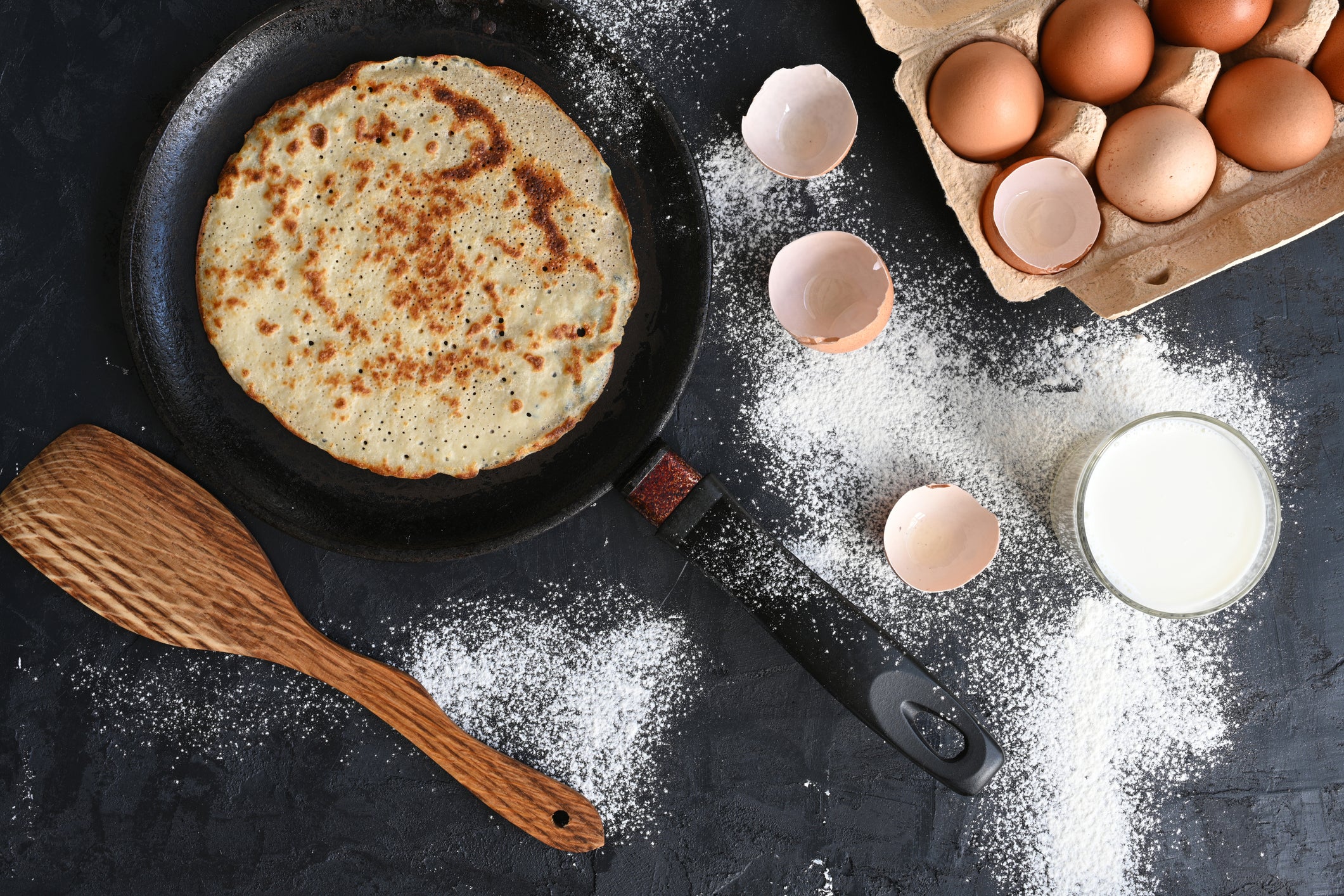How to make the perfect pancake this Shrove Tuesday
From tackling lumpy batter to having your creation stick to the pan, making the perfect pancake can feel like an arduous process - so here are a few tips and tricks to make the process a little easier
Your support helps us to tell the story
From reproductive rights to climate change to Big Tech, The Independent is on the ground when the story is developing. Whether it's investigating the financials of Elon Musk's pro-Trump PAC or producing our latest documentary, 'The A Word', which shines a light on the American women fighting for reproductive rights, we know how important it is to parse out the facts from the messaging.
At such a critical moment in US history, we need reporters on the ground. Your donation allows us to keep sending journalists to speak to both sides of the story.
The Independent is trusted by Americans across the entire political spectrum. And unlike many other quality news outlets, we choose not to lock Americans out of our reporting and analysis with paywalls. We believe quality journalism should be available to everyone, paid for by those who can afford it.
Your support makes all the difference.There are many ways to ruin a pancake.
From tackling lumpy batter to having your creation stick to the pan, making the perfect pancake can feel like an arduous process. And that's before the flipping has begun.
But if you want to ensure your pancakes end up on people's plates rather than on the floor, here are five simple tips to make your Shrove Tuesday run smoothly.
Tip one: Actually follow a recipe
It may seem simple, but a lot of people will be tempted to make their batter by filling a bowl with however much flour, eggs and milk they have left in the kitchen.

Don’t do this. For a simple basic batter recipe, there’s no better place to go than to Delia herself. Ms Smith recommends:
110g/4oz plain flour, sifted
Pinch of salt
2 eggs
200ml/7fl oz milk mixed with 75ml/3fl oz water
50g/2oz butter (for pan)
Tip Two: Use the right pan
A good pan will do most of the work for you, preventing the pancakes from sticking while maintaining a consistent level of heat.
If you are tempted to buy a cheap, thin non-stick pan for purpose then be prepared for it to be just that – they tend not to last (usefully) from one year to the next.
A good solid pan with a rounded join between the rim and base is probably best!
Tip three: Don’t use too much butter

Basic, unsalted butter is the best thing to use when lubricating your pan – but bear in mind that it will quickly brown in the heat if you use too much. Try brushing a thin layer on quickly with kitchen paper – you could use a pastry brush with bristles, but it will take a battering (pun intended – don’t actually batter the brush itself).
Tip four: Embrace flipping failure
You will drop a pancake. At least one, probably more. But once you get into the swing of things flipping the things is infinitely quicker, more likely to produce good pancakes and makes you look fantastic.
If necessary, try to get any guests or family members to be elsewhere when you do the first few, and clean the floor thoroughly beforehand.
Tip five: Put your faith in science
If you’re one of those people who would prefer to have everything meticulously planned out than rely on trial and error, allow science to do the work for you.
University College London Professor of Mathematics Frank Smith has devised a formula works out the perfect mechanics for a flawless flip, based on how high you plan to flip the pancakes and how large they are going to be. It is:
L = 4×H /π– D / 2
(L = hand distance from inner edge of the pancake / H = height of flip / D = diameter of pancake)
Practically speaking, this should tell you how far down the handle to hold the pan in order to get the perfect flip. Professor Smith told the Telegraph: “We’ve discovered that the wrong direction or speed, for instance, will mean that the average flipper may ruin two or even more pancakes trying to perfect their technique.
“We aim to reduce this waste by advising Brits how to achieve the perfect flip.”

Join our commenting forum
Join thought-provoking conversations, follow other Independent readers and see their replies
Comments